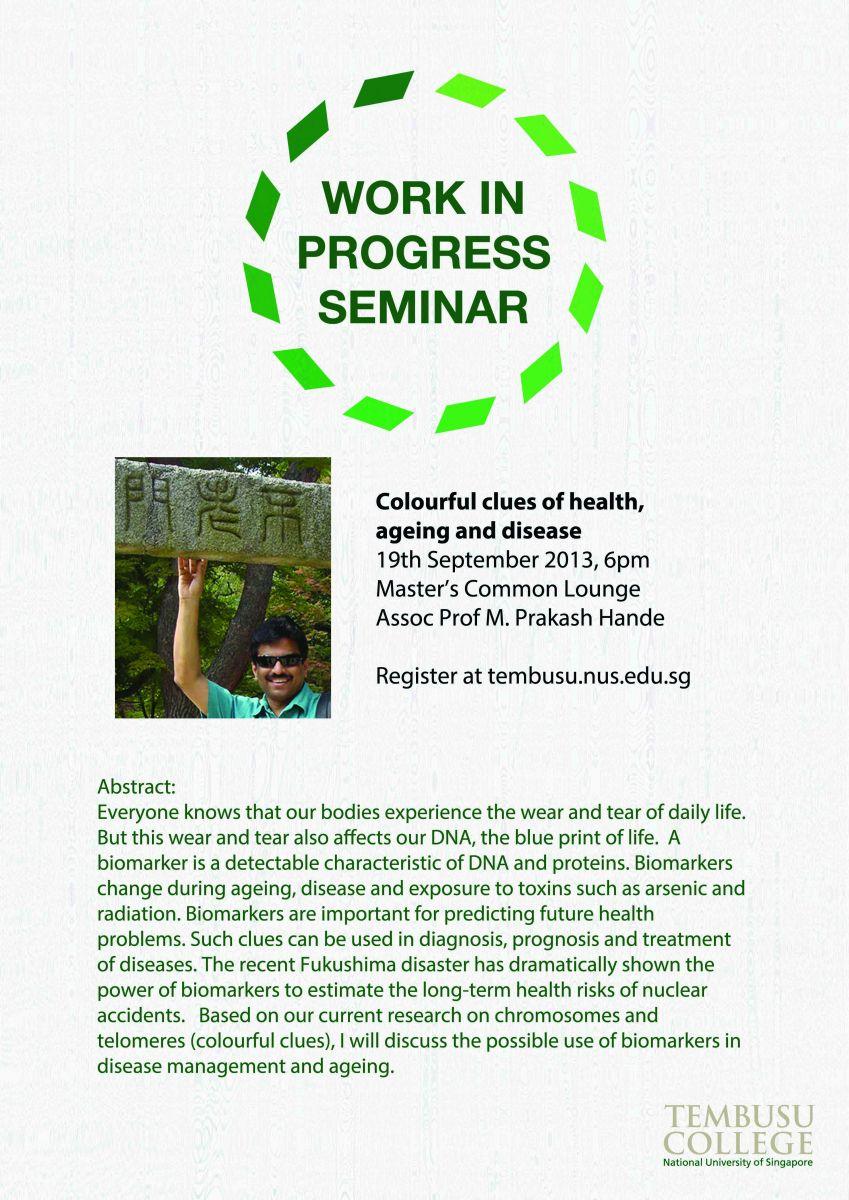
Work In Progress Seminar
Colourful clues of health, ageing and disease
19th September 2013, 6pm
Master’s Common Lounge
Assoc Prof M.Prakash Hande
Register at dev-tembusu-nus.pantheonsite.io
Abstract: Everyone knows that our bodies experience the wear and tear of daily life. But this wear and tear also affects our DNA, the blue print of life. A biomarker is a detectable characteristic of DNA and proteins. Biomarkers change during ageing, disease and exposure to toxins such as arsenic and radiation. Biomarkers are important for predicting future health problems. Such clues can be used in diagnosis, prognosis and treatment of diseases. The recent Fukushima disaster has dramatically shown the power of biomarkers to estimate the long-term health risks of nuclear accidents. Based on our current research on chromosomes and telomeres (colourful clues), I will discuss the possible use of biomarkers in disease management and ageing.


